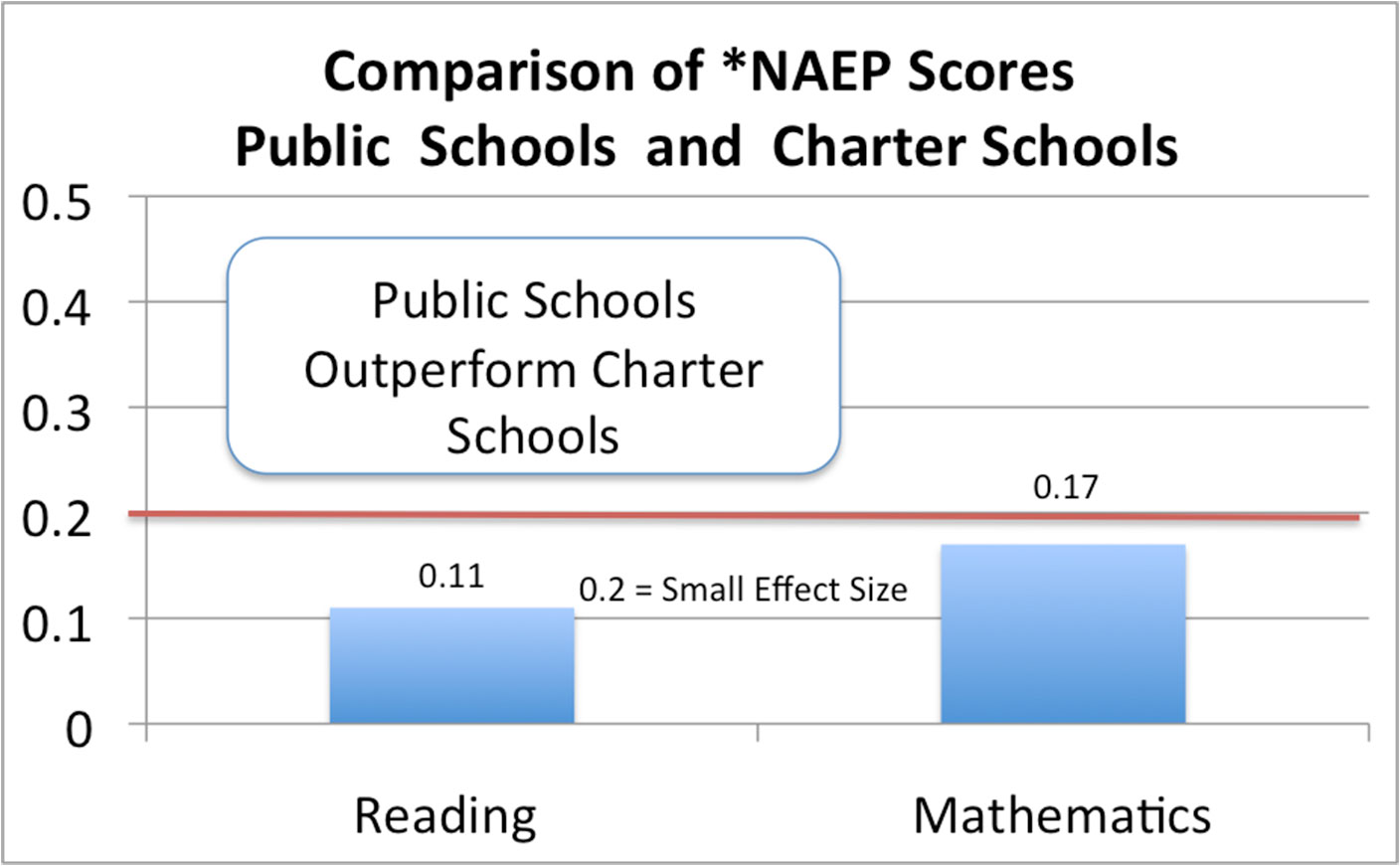Do charter schools outperform traditional schools
Why is this question important? Over the past decade, charter schools have been increasingly and enthusiastically adopted as a solution to poorly performing schools. Because these schools have been actively employed in urban areas to remedy the lagging performance of lower Socio Economic Status (SES) children, it is important that the model be rigorously studied to assure the intervention is effective.
See further discussion below.

Source: A Closer Look at Charter Schools Using Hierarchical Linear Modeling, 2006
Results: Charter school mean scores in reading and mathematics were lower, on average, than those for traditional public schools. The size of these differences was smaller in reading than in mathematics. Charter schools differ from one another in many ways. In reading and mathematics, average performance differences between traditional public schools and charter schools affiliated with a public school district were not statistically significant, while charter schools not affiliated with a public school district scored significantly lower, on average, than traditional public schools.
Implications: The growth of charter schools to over 1.4 million students across 40 states in just 15 years is showing no sign of waning, as each year hundreds of new charter schools open and waiting lists grow to more than 300,000. Not surprisingly, charter schools continue to attract the attention of reformers and are likely to remain in the forefront of improvement efforts for years to come, despite charter schools having little in common in structure, practices, or curriculum. The study reveals a great variance in the performance of charter schools. Schools in some states perform well, and those in other states perform worse than traditional public schools. This is not a surprising result, as charter schools do not represent a common approach, set of practices, or teaching methods. Charter schools are a prime example of the tendency for education reformers to focus on policy solutions as a quick fix as opposed to implementing evidence-based education practices. Research tells us effective education reform is complex, requiring complex solutions with regard to how we instruct children. What charters schools do share is local governance and the fact that parents have a choice to place a child in a charter school. Unfortunately, these traits are not in themselves enough to ensure improvements in student achievement sought by parents and reformers.
Authors: Henry Braun, Frank Jenkins, and Wendy Grigg
Publisher: National Center for Education Statistics, Institute of Education Sciences, U.S. Department of Education
Study Description: This study is a statistical analysis of charter schools, conducted as part of the 2003 fourth-grade NAEP assessments comparing academic achievement of students enrolled in charter schools with that of students enrolled in traditional public schools. The school sample comprised 150 charter schools and 6,764 traditional public schools. School participation rates were 100% for both charter and traditional public schools. Student participation rates were 92% for charter schools and 94% for traditional public schools. The results, employing data from the 2003 NAEP fourth-grade assessments in reading and mathematics, were presented in the NCES report America's Charter Schools: Results From the NAEP 2003 Pilot Study.
The report uses the hierarchical linear models (HLM) method to examine differences between the two types of schools when multiple student and/or school characteristics are taken into account. HLM was a logical choice for this analysis because it can accommodate the multiple variables intrinsic to educational studies with nested structure of the data (i.e., students clustered within schools) and the inclusion of variables describing student and school characteristics.
There are a number of reasons for caution in interpreting the study:
- The conclusions presented involve national estimates. Results based on a census of public schools in a particular jurisdiction may differ.
- The data was obtained from an observational study rather than a randomized experiment. The effects should not be interpreted as causal.
- Charter schools offer parents a choice on where to send their child to school.
- Parents may be attracted to charter schools because they feel their child will receive a better education than that provided by public schools.
- The parents of these children may be more active in their children's schooling and are attracted to the opportunity for greater involvement.
Definitions:
- NAEP: The National Assessment of Educational Progress, otherwise known as the Nation's Report Card, which informs the public about the academic achievement of elementary and secondary students in the United States.
- Charter school: A public school managed independently of the local school board, often with a curriculum and educational philosophy different from the other schools in the system.
- Hierarchical Linear Model (HLM): Statistical techniques to assess the impact variables such as schools or teachers on student achievement.
Related Research:
Citation: National Center for Education Statistics; Web site: http://nces.ed.gov/nationsreportcard/pubs/studies/2006460.asp
